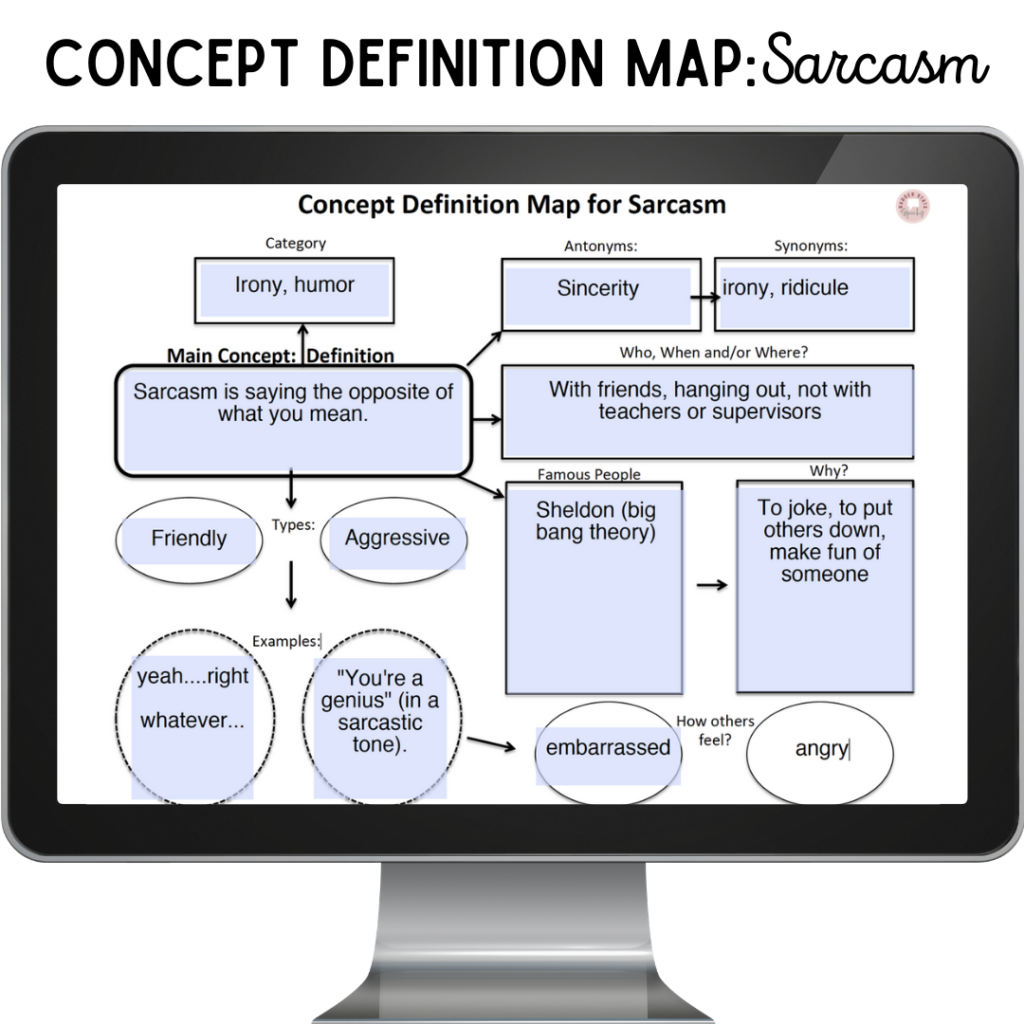
Are you teaching sarcasm to your students and clients during speech therapy or counseling? It’s a nuanced topic and people have strong opinions about the its place in the world as a communication tool. Some SLPs and parents wonder if detecting sarcasm is a skill we should (or shouldn’t) be teaching students with autism during our speech therapy sessions. So, let’s begin with clarity. It is not my intent with this post to encourage you to teach children to use sarcasm. I am not advocating we teach every student with autism how to detect it. That choice is not mine. I personally DO teach many of my autistic students how to detect sarcasm, especially since it is used all around them and is prevalent (along with its companion, irony) in literature. If you have clients that have goals for detecting or knowing when to use sarcasm, this blog post should be helpful to you. If you are looking for the overall steps or elements to teaching students how to detect sarcasm, you could start with this prior blog post on the elements of teaching sarcasm.
Let’s start the process of teaching sarcasm by examining what it’s not and look at the opposite of sarcasm. Some therapists contrast “serious” with “sarcastic” but I prefer to use “sincere” as the contrasting term. Using “serious” as the contrasting concept makes sense to me only if you accept that sarcasm is only used to be fun, humorous or playful. By accepting that definition, we’re not aknowledging that sarcasm can be hurtful. Since most of us aknowledge that sarcasm can also be used to mock others or convey contempt, I prefer to use “sincere” as the opposite of sarcasm, which means to be open and genuine, not deceitful.
Let’s take a deep dive! It’s complicated-devote some TIME to it. I use the concept definition map from my free subscriber’s resource library to establish an agreed upon definition. You might also have students fill out what they can on the map before instruction, and then fill in anything they missed, after instruction.


Once students learn how to detect it in your speech therapy session, I like to teach clients some general rules they can use to interpret the REAL MEANING behind a sarcastic statement.
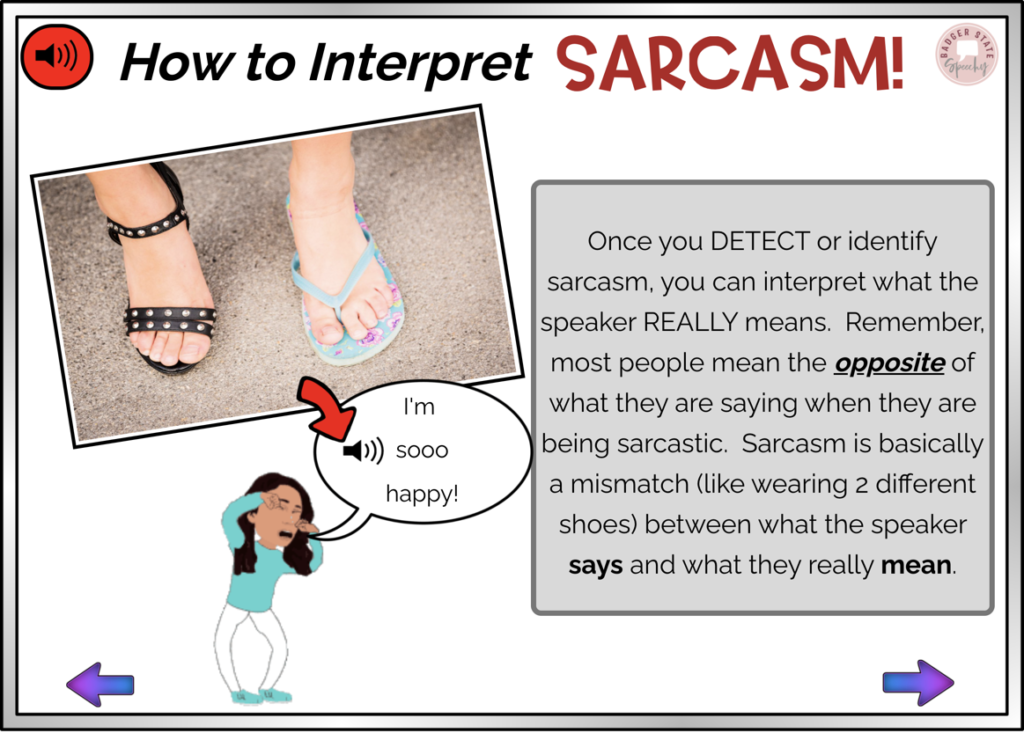
Sarcasm is all around us! We use it in texts, emails and on social media so many students are taught how to identify it in written communication. In written communication we aren’t provided with the important tone of voice signs but we do have the following signs of sarcasm to guide us.
There’s a sample slide below!
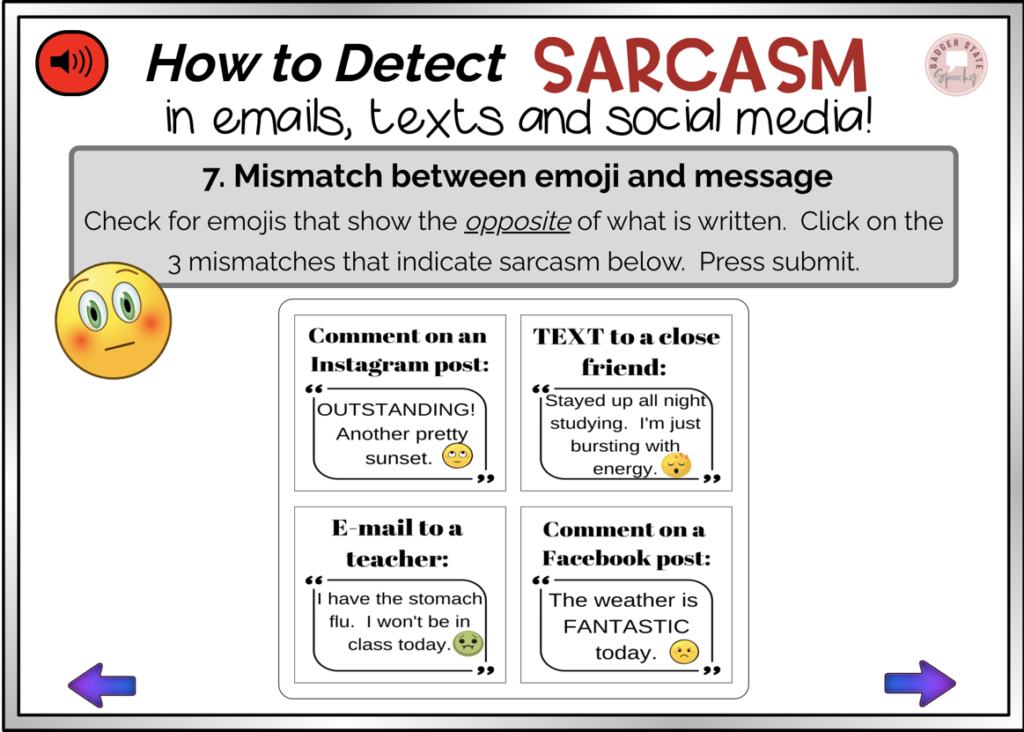
Another fun way to teach speech therapy students to identify it in written form is by using sarcastic t-shirts. I wanted to link to some online t-shirt stores but the content is often inappropriate. So, I designed my own set of BOOM cards: T-shirt Inferencing and Sarcasm! Sample slide below!
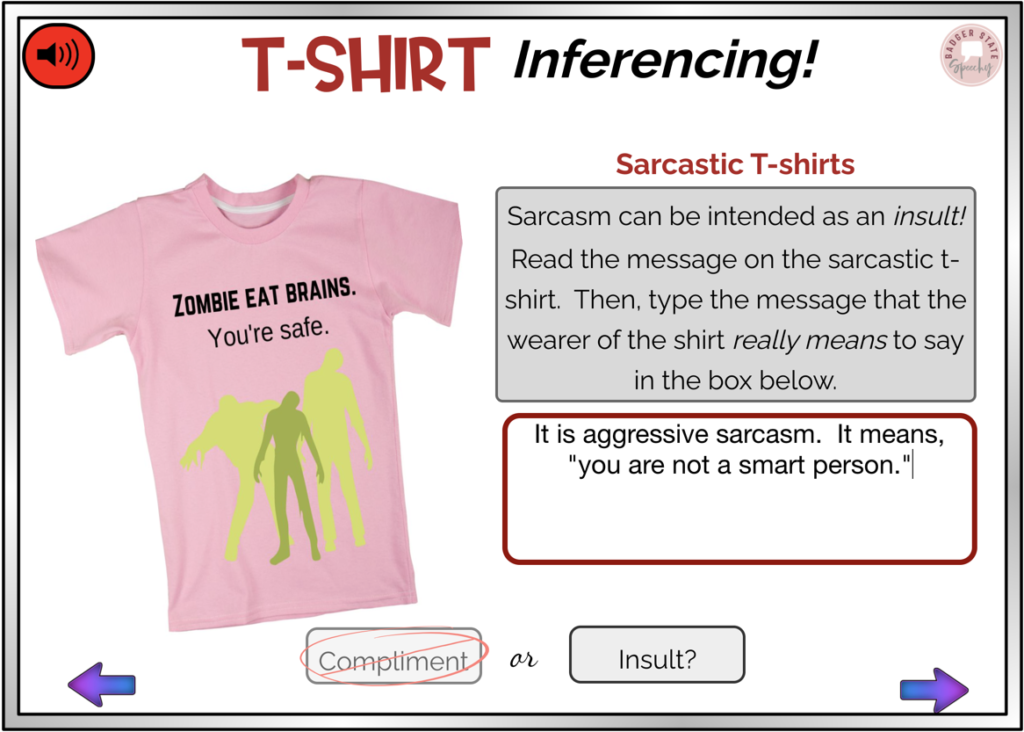
Perhaps you have students that misuse or overuse it. Teach them that there’s a time and a place for using sarcasm, and the differences between sarcasm that is polite and friendly versus sarcasm that is aggressive.

Sarcasm can be used in a friendly, joking or humorous way. It is also used to embarrass, mock, belittle or establish a sense of power over another person. So, when I’m teaching about the use of sarcasm, I teach students that there are two kinds, “friendly” (or polite) sarcasm and “aggressive” (or mean) sarcasm. This gives students the framework needed to understand when their sarcasm has crossed a line from “joking” to “hurtful.”
Friendly sarcasm can include jokes, puns or sarcasm about a conflict or frustration that two people share, such as when one student comments to another student in a shared class about their teacher, “oh, I just LOVE Mr. Anderson” in a sarcastic tone with an eye roll. These students are sharing a frustration over a teacher and this type of sarcasm can actually help build a relationship, as opposed to aggressive sarcasm, which can hurt a relationship. In my BOOM deck on using sarcasm, students practice identifying friendly and aggressive sarcasm and then evaluate social situations to determine if sarcasm is appropriate for use in the situation.
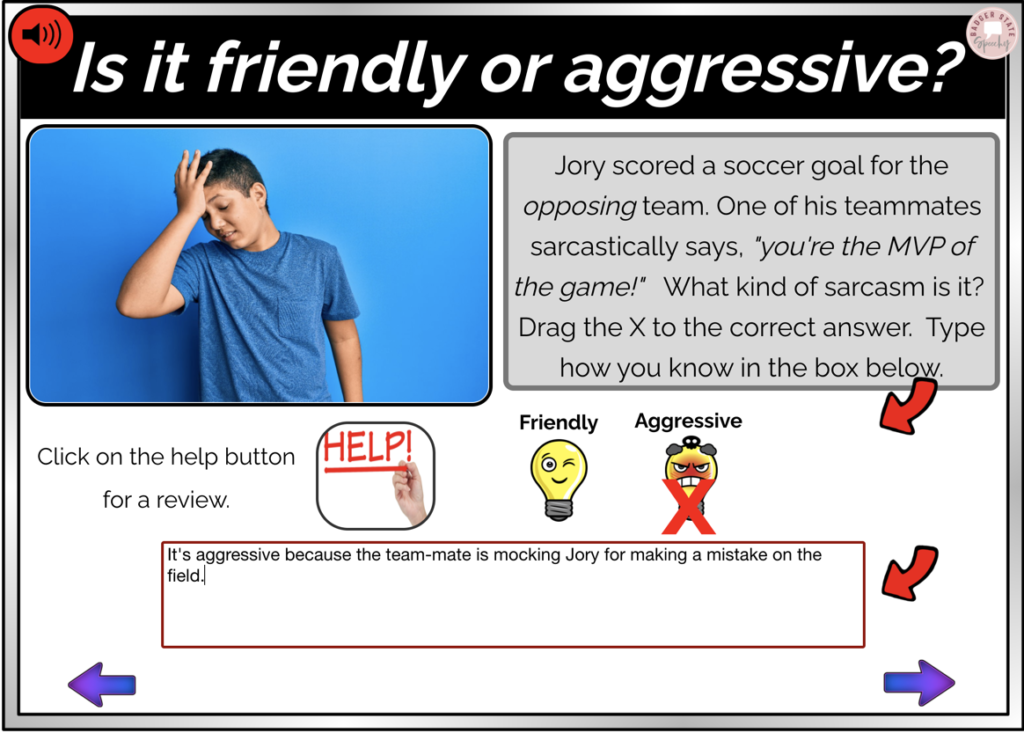
All of the decks (except T-shirt Inferences and Sarcasm) have a pretest, self-rating and complete lesson with multiple choice and open-ended knowledge checks.
You can either purcase the four BOOM decks on sarcasm through the Teachers Pay Teacher’s links below: